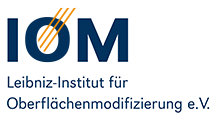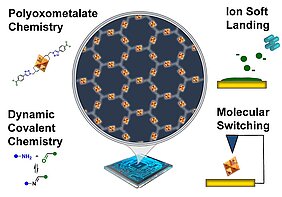DFG allocates for the Project „Construction of Covalent Polyoxometalate Networks (CPNs) on Surfaces as Alternative Data Storage Materials“ (Akronym: CovPOMNet) funds in a scale of 317.100 Euro, to conduct the research in the field of “Switchable molecular-functionalized surfaces” within the next three years. The interdisciplinary project (acronym: CovPOMNet) aims to investigate the potential of dynamic covalent chemistry (DCC) on solid surfaces for the formation of Covalent Polyoxometalate Networks (CPNs), i.e. imine-based self-assembled, one-dimensional (1D) and two-dimensional (2D) superstructures consisting of highly arranged polyoxometalate (POM) units. Synthetically available bis-amine and bis-aldehyde reactive hexavanadate derivatives as bis-functionalized monomers will be utilized to enable the construction of matrices with regularly arranged, switchable molecular fragments. To find out the most efficient strategy for the construction of these assemblies, comprehensive studies are planned using two different approaches: (1) surface-induced self-assembly at the surface-liquid interface established for covalent organic frameworks (COFs), and (2) the atom-efficient and precisely controlled method of ion soft landing. The fabricated on-surface superstructures will be studied by a combination of microscopy (STM or low-conductive AFM) and spectroscopy (FTIR microscopy and XPS). Electrical measurements of molecular (STS) and nanoscale (C-AFM) assemblies will be performed to gain insights into the switching characteristics of hexavanadate cores embedded in CPN arrays. The latter measurements should answer on the fundamental question about the interplays between CPN structural parameters and the electronic properties of the individual molecular switchers. The obtained results are expected to realize a new concept of surface-supported regular CPNs and thereby not only provide fundamentally new knowledge about the self-assembly behavior of anionic POMs on surfaces, but also stimulate the creation of large-scale, responsive molecular addressable electronics.
Contact:
Dr. Stanislav Petrovskii
Research Scientist / Synthesis of stimuli-responsive molecular metal complexes
E-Mail: stanislav.petrovskii(at)iom-leipzig.de

